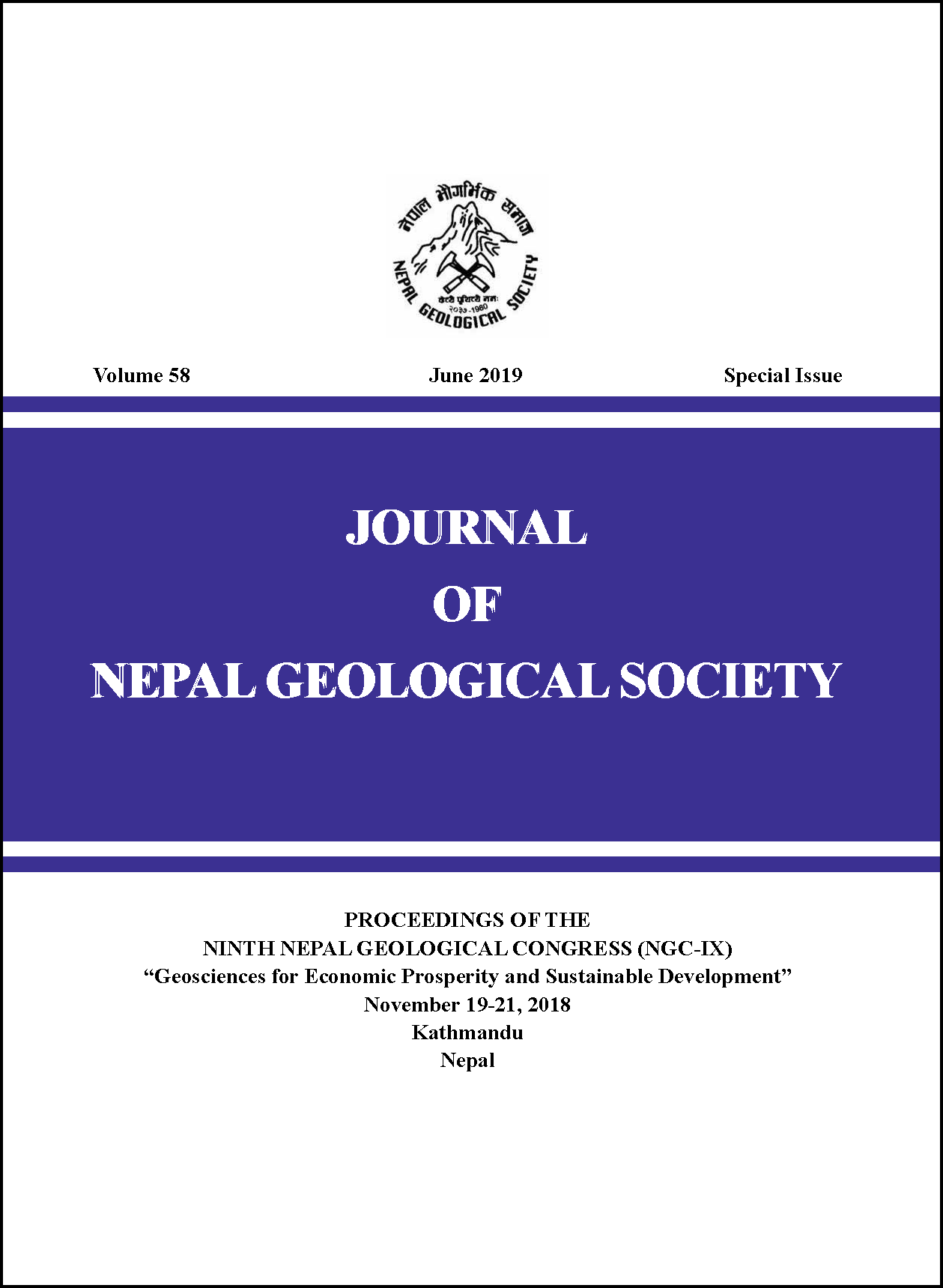Geology and micro-structure analysis of the MCT zone along Khudi- Bahundanda area of Lamjung District, west-central Nepal
DOI:
https://doi.org/10.3126/jngs.v58i0.24593Keywords:
MCT zone, Metamorphism, Deformation, Micro-structure, Marshyangdi valleyAbstract
Geological mapping was carried out along the Marsyangdi Valley in the Khudi-Bahundanda area of west-central Nepal covering the Main Central Thrust (MCT) zone. The main objectives of the study were to draw a clear picture of lithology, geological structures and micro-tectonics in the rocks. A detail survey on stratigraphy and correlation with central Nepal reveals geological rock units such as the Benighat Slate, the Malekhu Formation and the Robang Formation of the Lesser Himalaya and the Formation I of the Higher Himalaya. Both regional and small-scale geological structures have been studied. The MCT zone has been mapped as a major regional structure in the region. The Bahundanda Thrust (BT), which has brought the older Malekhu Formation over the younger Robang Formation, is an another significant structure mapped. The BT is marked on the basis of fault breccia, slickensides as well as large deposits of debris mass at the fault zone.
The study area has undergone poly-metamorphism and dynamic crystallization of minerals. The Lesser Himalayan rocks resemble the garnet zone while the Higher Himalaya rocks resemble to the kyanite grade of metamorphism. The present section clearly shows the inverted metamorphism in the MCT zone as in the other sections of the Himalaya. Microscopic features like ribbon-quartz, polygonization of quartz crystals, grain boundary reduction, mica-fish and rotated garnet grains indicates the ductile shearing in the MCT zone suggesting the dynamic recrystallization during thrust propagation. Numerous outcrop-scale structures like meso-scalefolds, quartz veins, boudinage and ptygmatic folds are abundant folds in the MCT zone and these are mostly E-W trending.
Downloads
Downloads
Published
How to Cite
Issue
Section
License
© Nepal Geological Society




